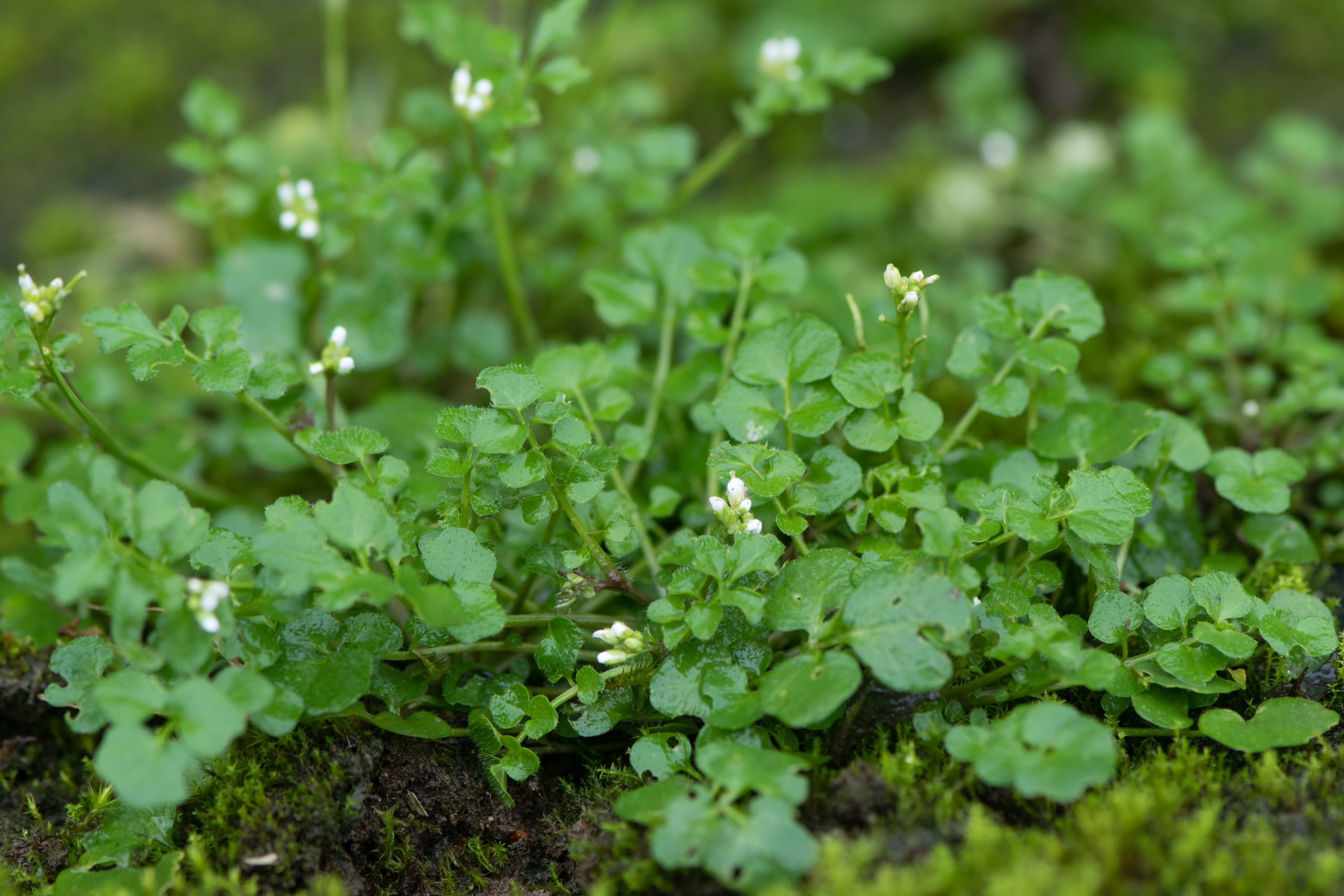Winter annual broadleaf weeds like hairy bittercress, black medic, and speedwell are already here and taking hold in the newly formed thin areas and bare spots left behind after a challenging summer. These weeds are still very young and small, making herbicide applications difficult. To stop these weeds in their tracks, we want to get the herbicides down into the canopy and onto the target more effectively. Water testing, increasing spray coverage, and using adjuvants, especially when making low-volume applications out of ride-on spreader-sprayer units, will achieve this.
Winter Annual Broadleaf Weeds and Water Testing
When planning winter annual broadleaf weed control, we do our best to set ourselves up for success. We identify the problem, select the best product to control the issue, and properly set up our sprayers to ensure accurate application rates. But we often overlook our spray tank’s largest and most important input: water.
The pH and bicarbonates in the water are critical and can cause issues with winter annual broadleaf applications if not checked. High pH and bicarbonates can affect your tank mix compatibility and start breaking down the chemicals, affecting how well your tank mix goes into solution and, ultimately, how the chemical will perform.
If certain products don’t perform as expected or do not perform “like they used to,” you may want to consider testing your water. Once the test is complete, recommendations can be made to address your specific needs and improve the performance and efficacy of your applications. You can send water samples to local labs to test or bring a sample to your local Advanced Turf. Select Advanced Turf locations have on-site testing available and can have the results in a few minutes.
Winter Annual Broadleaf Weeds and Low-Volume Applications
Low-volume applications have become increasingly popular, mainly due to ride-on spreader-sprayer units. Applicators are seeing significant advantages from utilizing these units, such as improved productivity, consistency, accuracy, and reduced fatigue. Winter annual broadleaf weed applications can be completed successfully with spreader-sprayer units, just like other applications. Increasing the spray coverage is a vital aspect of a successful application. We recommend adjuvants for this.
Most low-volume application rates are applied at 1/4 -1/3 gallons per thousand square feet. Adding a quality adjuvant will assist a low-volume application with performing more like a high-volume application. Adjuvants spread water droplets on the leaf surface, significantly increasing spray coverage. Increased spray coverage will improve plant uptake with foliar and root-absorbed herbicide active chemistries.
Precision Laboratories LV is a newer adjuvant on the market that is very helpful for low-volume applications. It’s designed to be a strong buffering agent and also has excellent spreading properties. The buffering will protect your chemistry in the tank, and the spreading properties will increase spray coverage. LV has a very low use rate, starting at only one pint per 100 gallons (.125%).
Water testing and increasing spray coverage with adjuvants are two essential factors that can significantly affect your winter annual broadleaf weed applications. With the help of the right products, such as Precision Laboratories LV, low-volume applications can be just as effective as high-volume applications, resulting in beautiful and healthy properties all year round.












